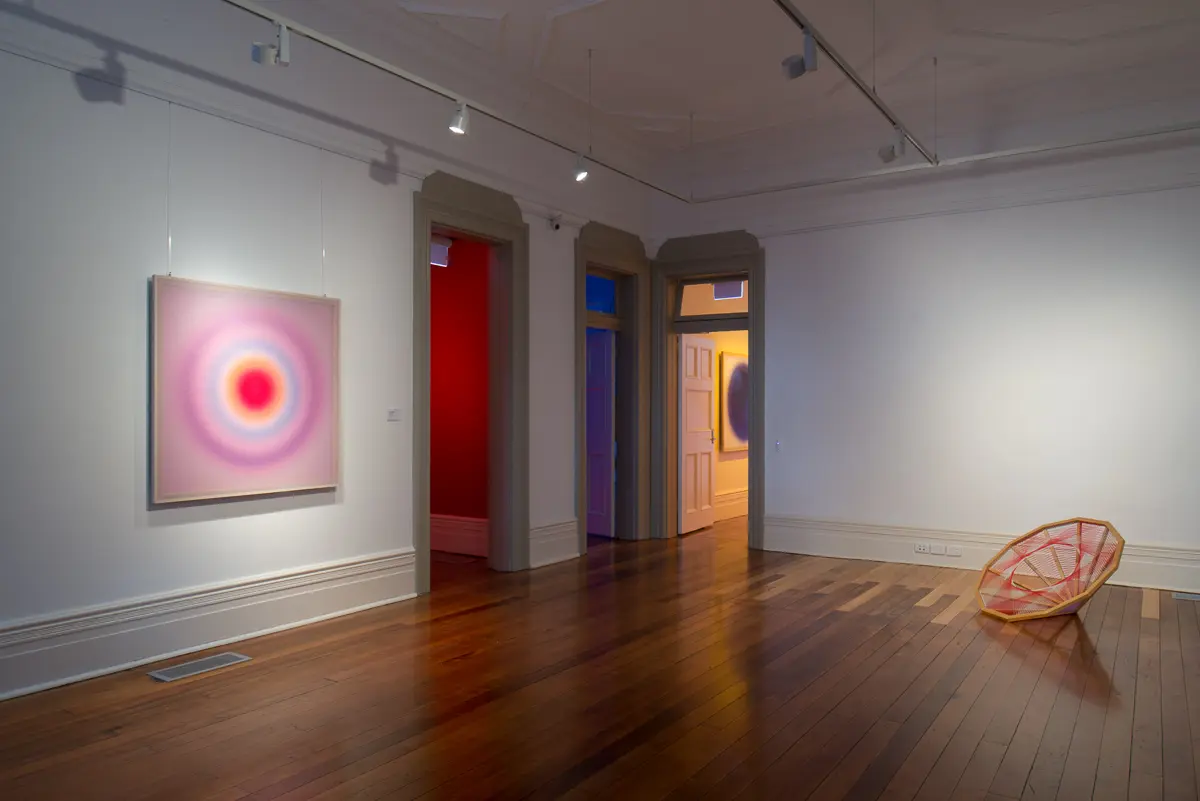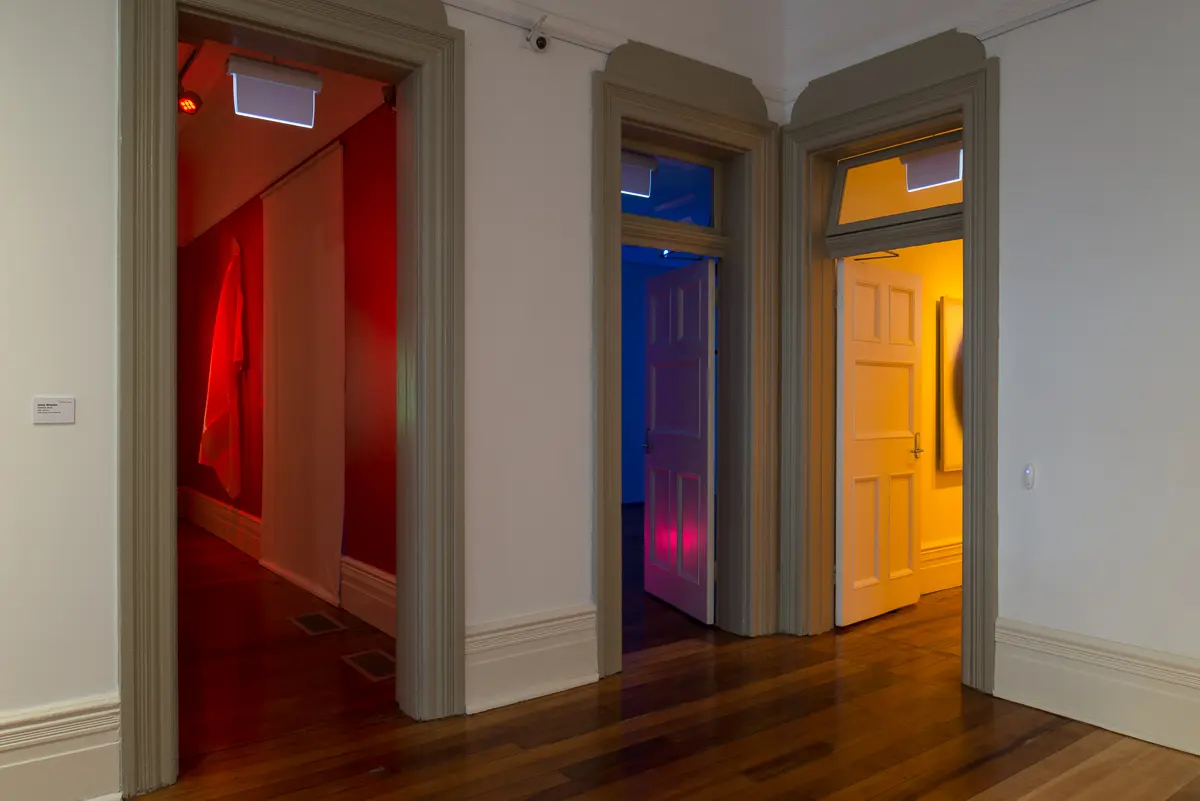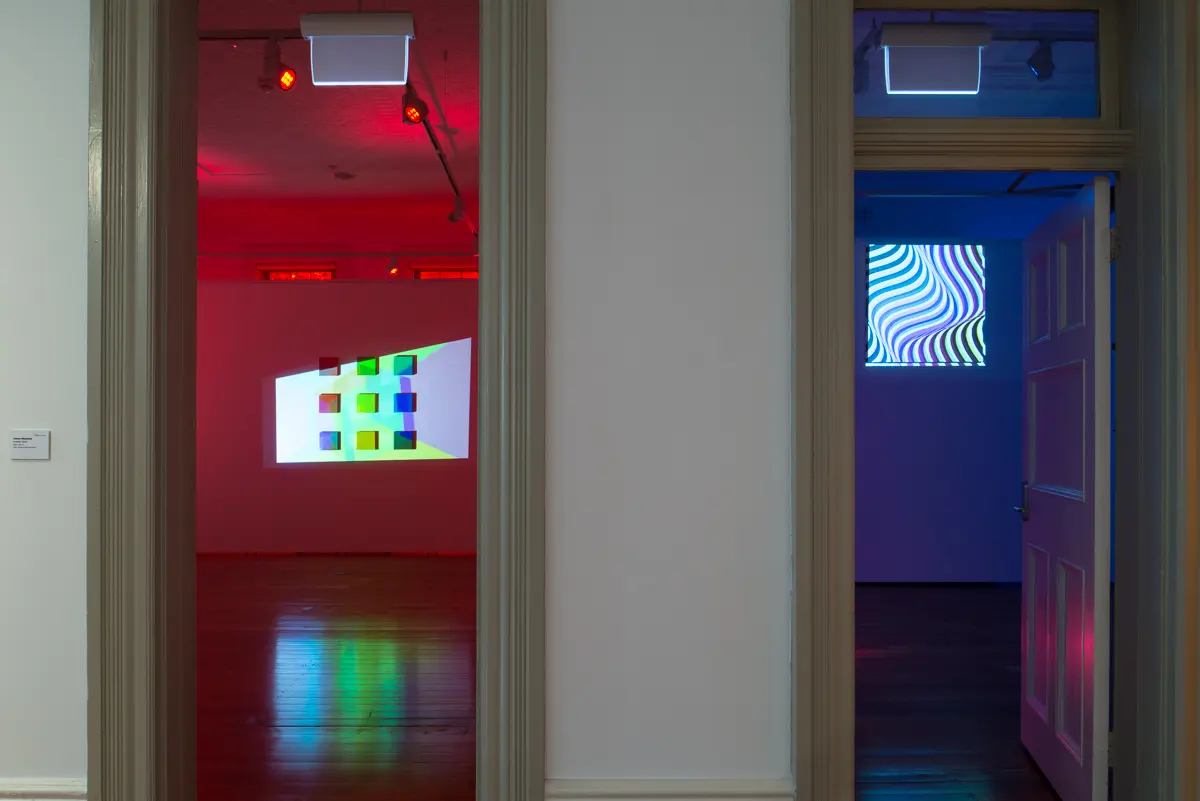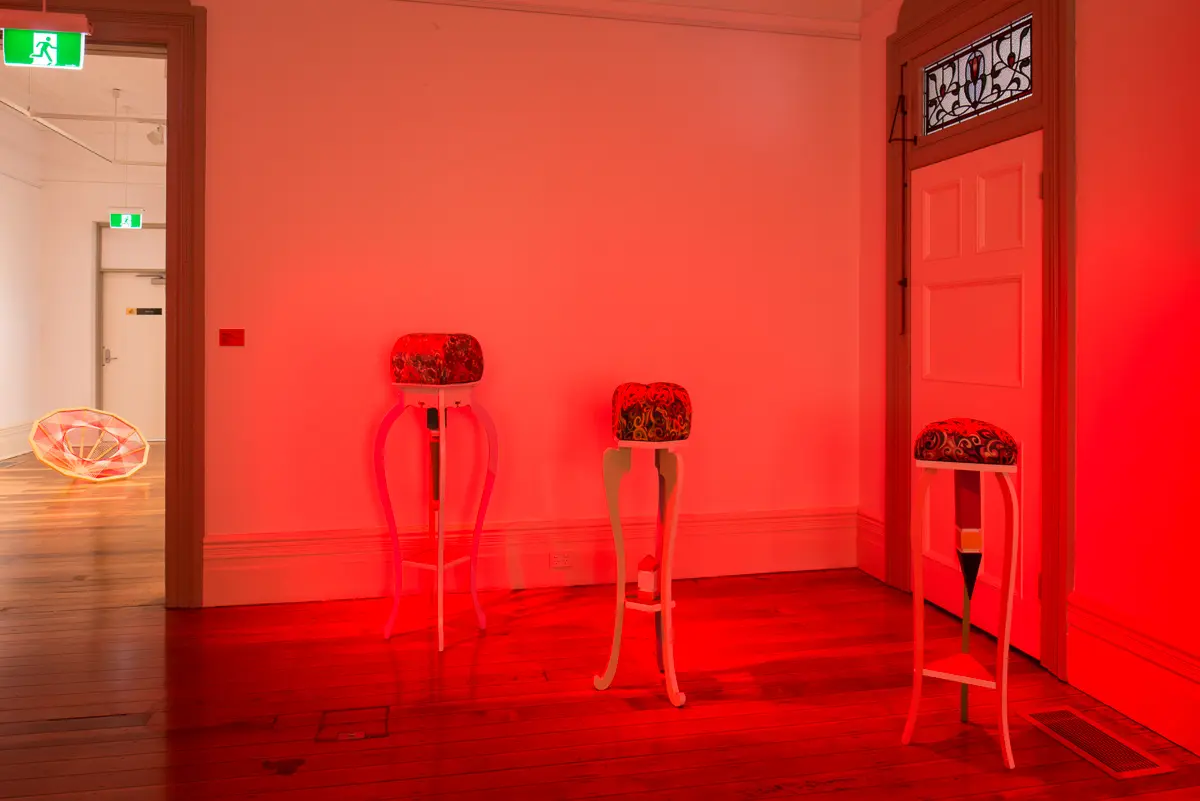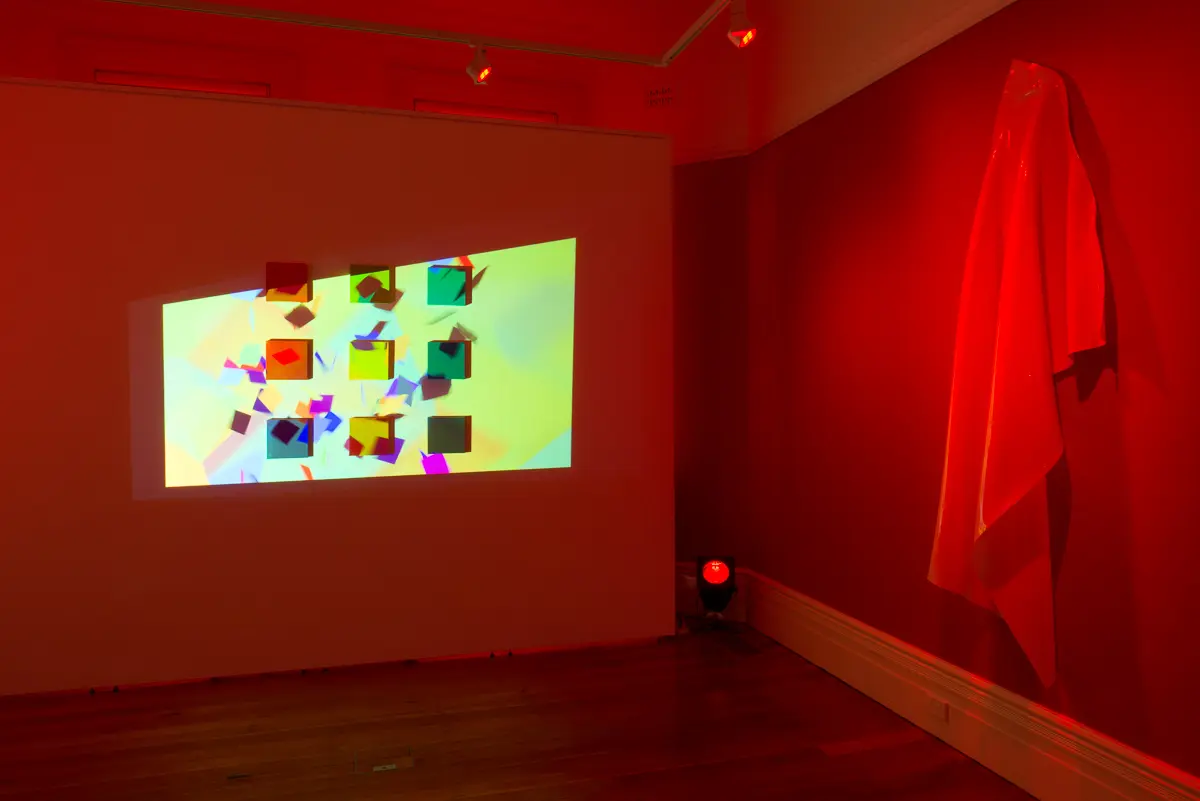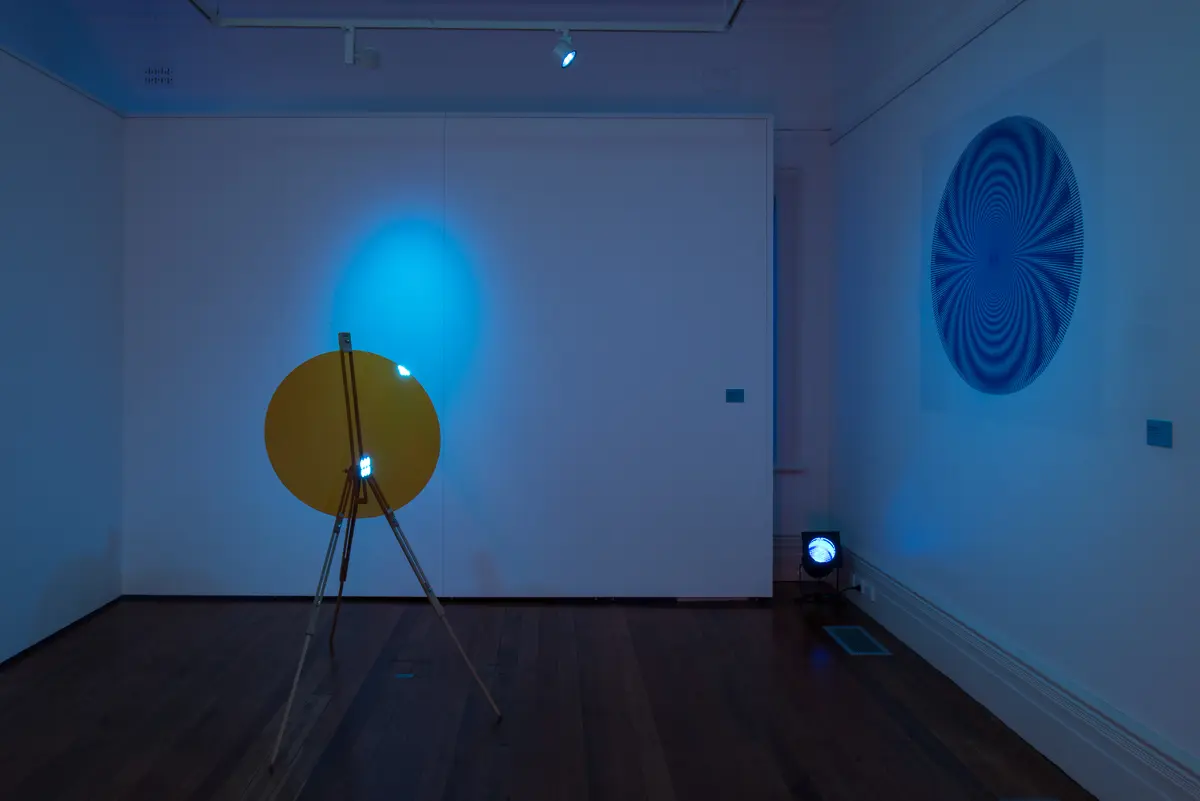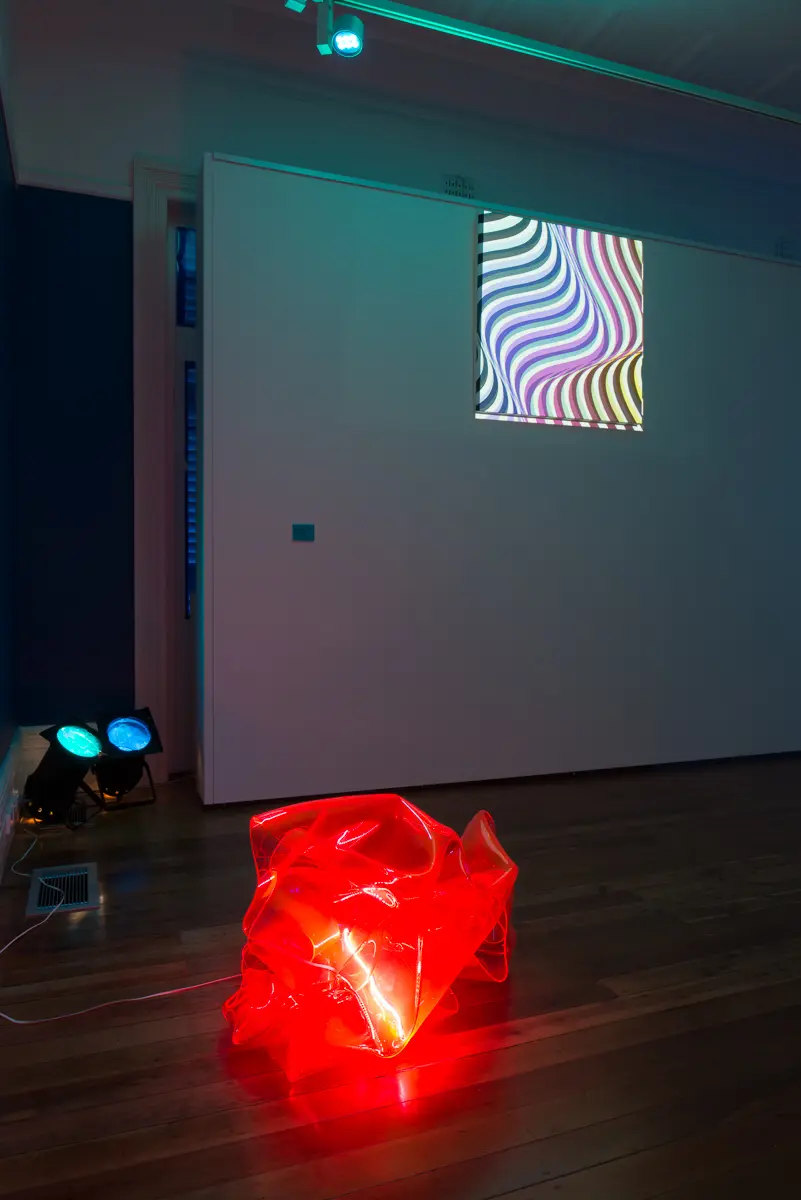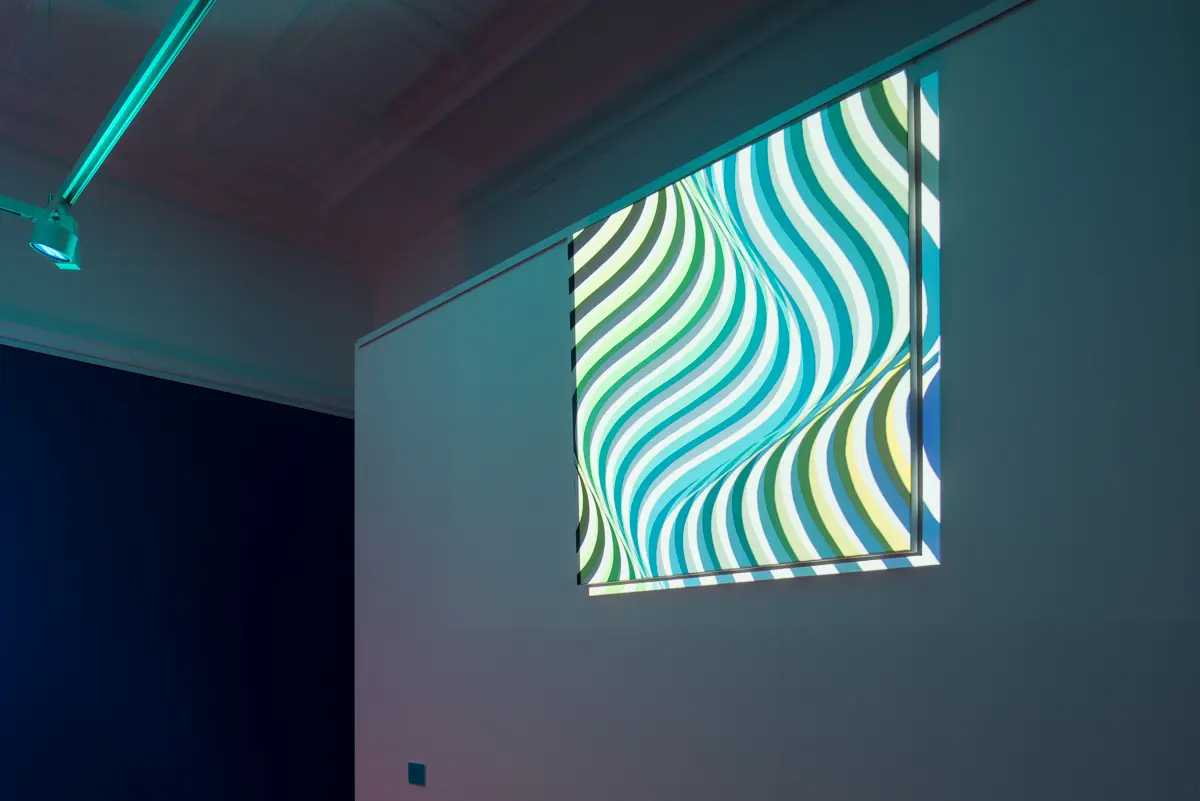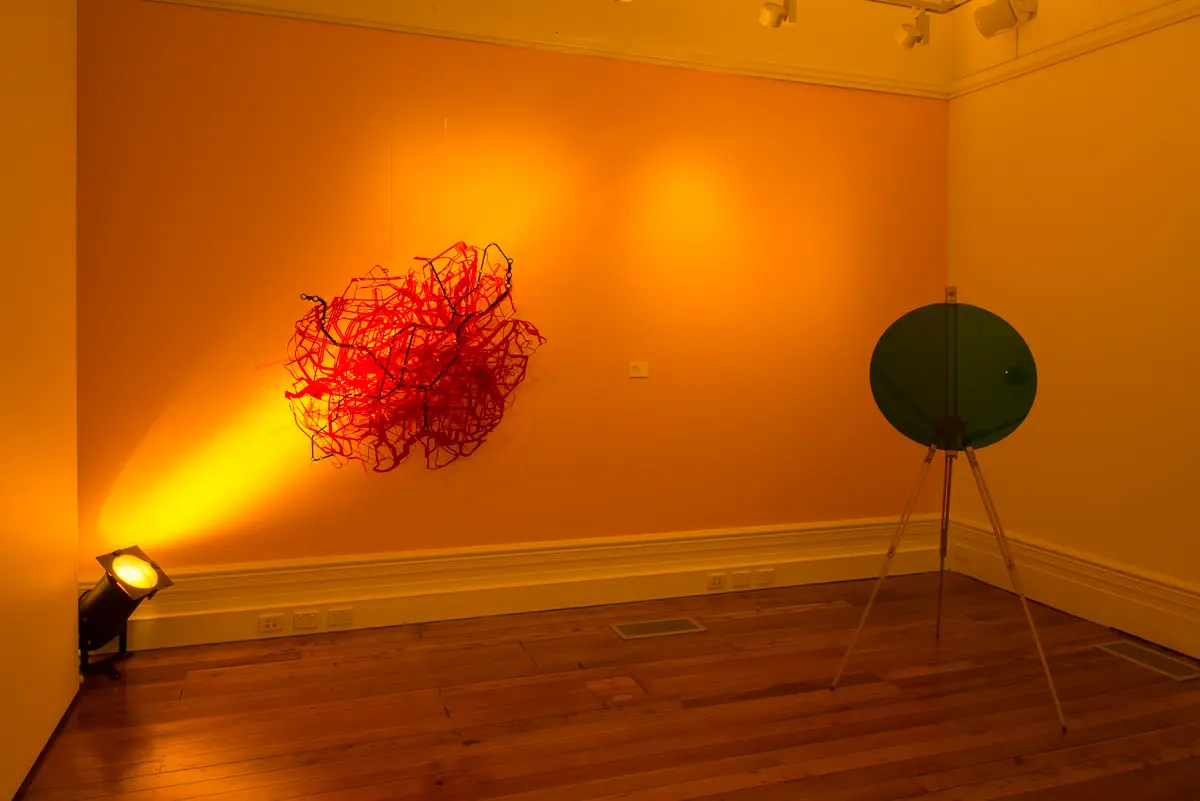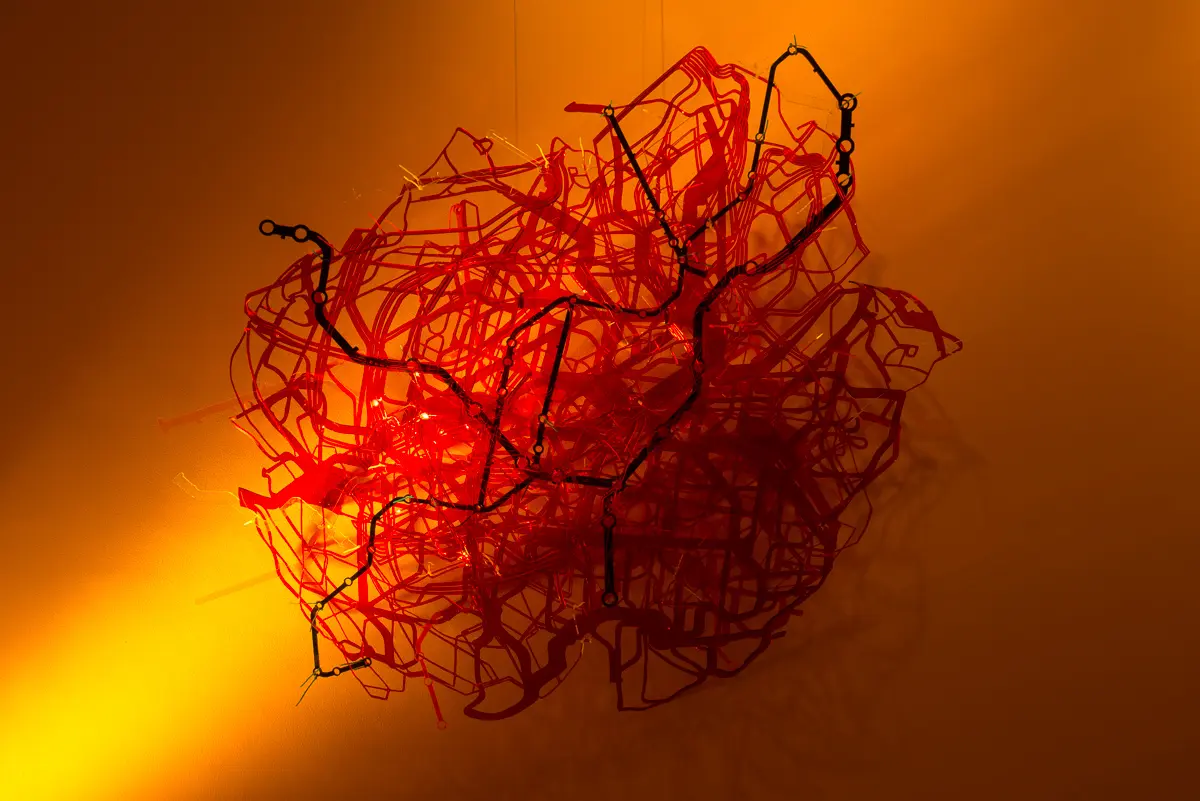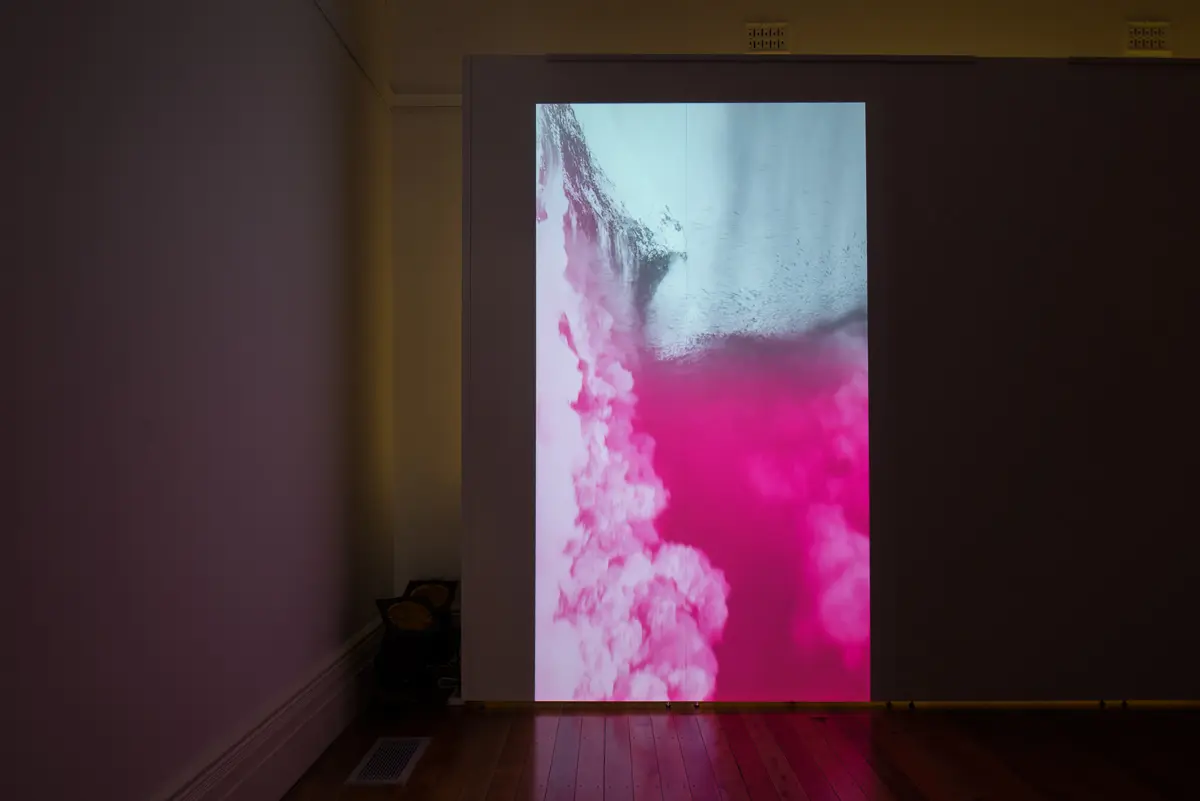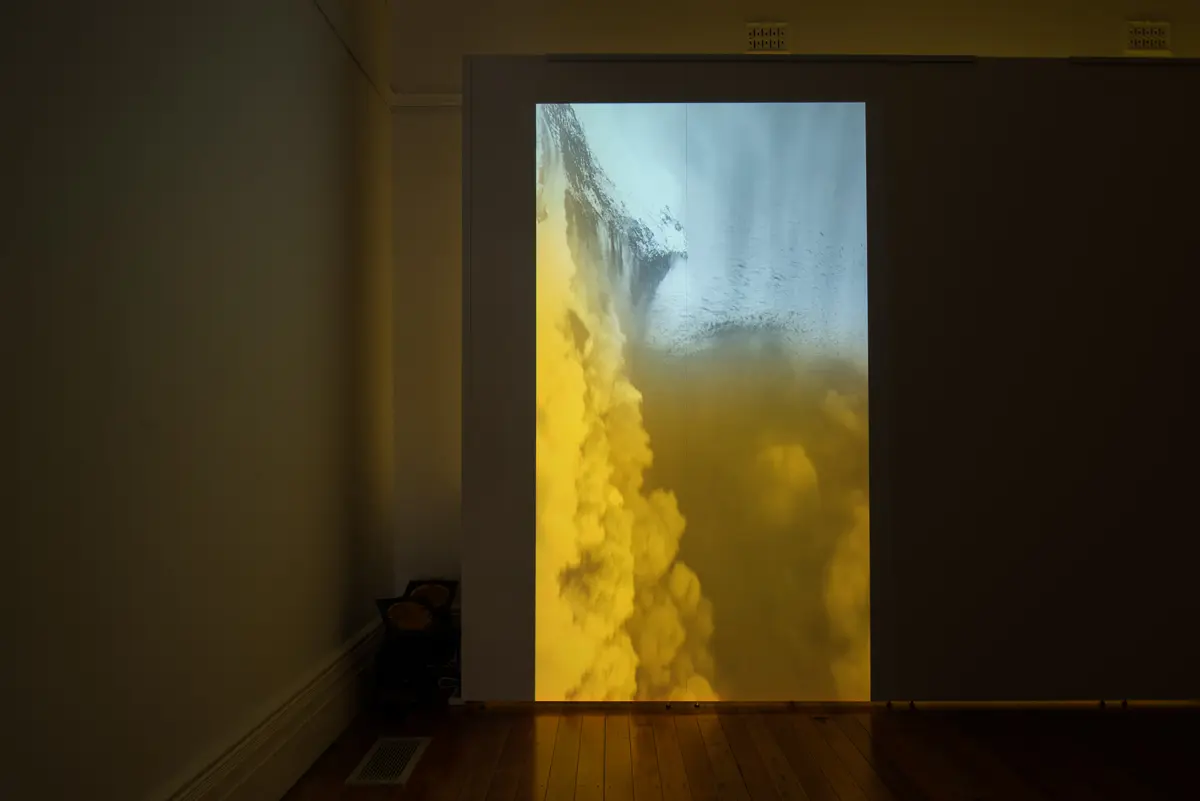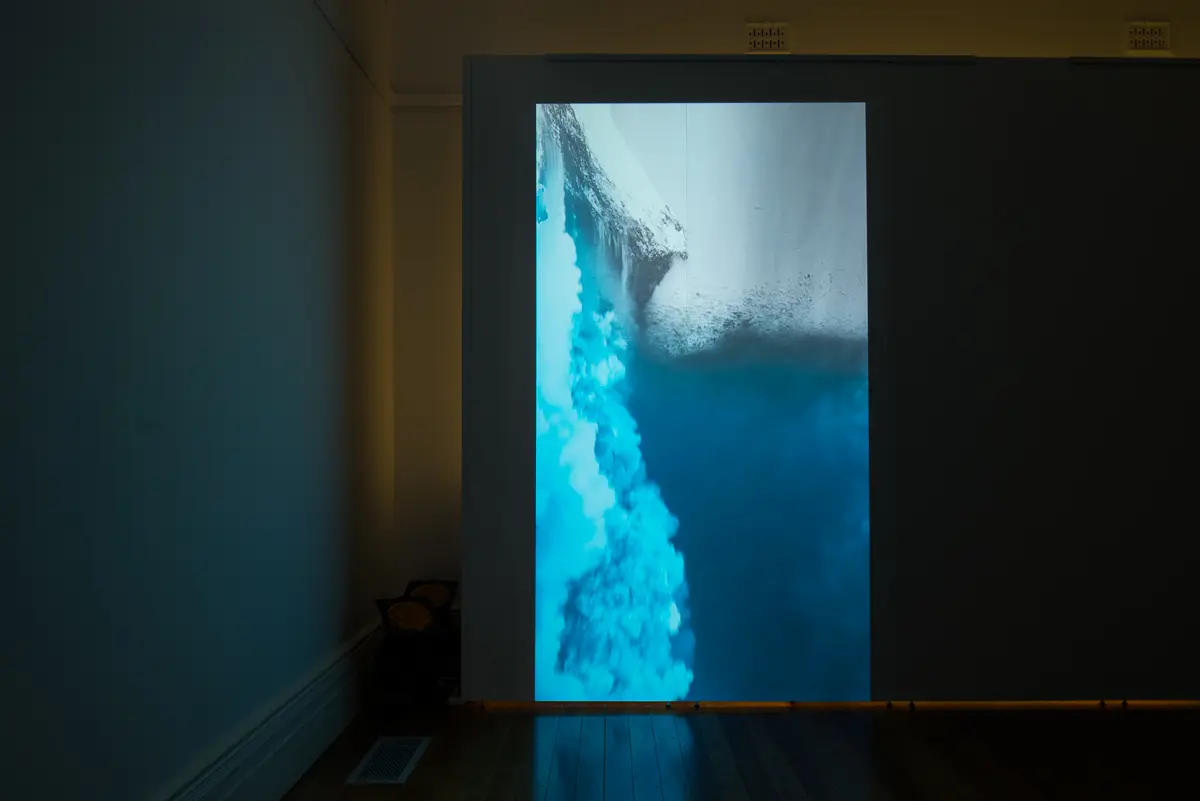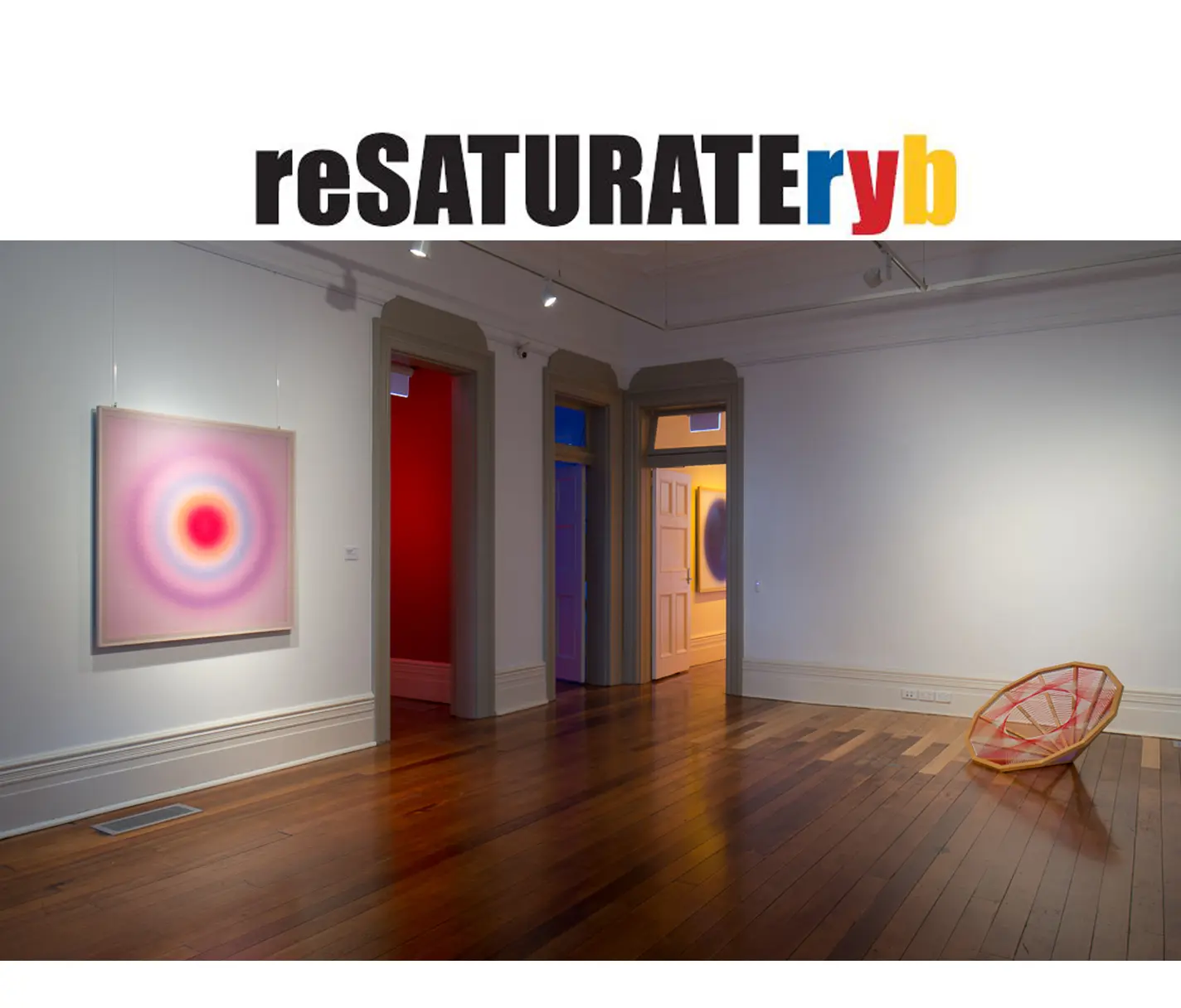
reSATURATEryb
reSATURATEryb
1 November to 6 December 2014
The Grace Cossington Smith Gallery announces reSATURATEryb, a group exhibition exploring the relationship between coloured objects and coloured spaces. reSATURATEryb complements and builds upon Saturate, a spatial colour installation held at Sydney College of the Arts in 2012. This time the curator, Nicholas Tsoutas, has selected the three main exhibition spaces in the gallery to each correspond to the Modernist or Bauhaus division of colour into primaries: red, yellow and blue.
reSATURATEryb curator Nicholas Tsoutas, the Zelda Stedman Lecturer in Visual Arts at Sydney College of the Arts, University of Sydney, selected eight artists who are graduates of Sydney College of the Arts:
Julia Davis, Lisa Jones, Stephen Little,
Tom Loveday, Jonny Niesche, Nuha Saad,
Nike Savvas and Mark Titmarsh.
The artists’ works will be exhibited saturated with Bauhausian primary colours.
As Tsoutas states: The colours of the artworks are changed to reveal new aesthetic, historical, political and social meanings. Rather than a simply a technical aspect of art, colour is revealed as an active critical device in the production and reception of contemporary art. reSATURATEryb, claims a spatial impact for saturated colour, freeing the colour from the surfaces of the room and allowing it to be in the space and not simply on the surfaces that define the space.
| Related Resources | |
| reSATURATEryb Media Release | Download PDF |
| reSATURATEryb Catalogue | Download PDF |
| reSATURATEryb Room Sheet | Download PDF |
Photography copyright Richard Glover
ABOUT THE ARTISTS and CURATOR
Nicholas Tsoutas: a curator and artistic director who is currently the Zelda Stedman Lecturer in Visual Arts at Sydney College of the Arts. For Tsoutas contemporary visual practice is about creating a space for dialogue and knowledge that has the capacity to challenge our understandings of the world we live in and the diversity of cultures that construct it.
Julia Davis: uses a wide range of materials and processes and focuses on the relationship between objects, places and spaces. With works installed in salt lakes, deserts, coastal precincts and parklands in addition to galleries, she explores the experiential as well as ideas of temporality and duration. In this exhibition she furthers her explorations into landscape as cultural space – a space formed by and informing culture and the premise that psychology of ‘place’ underpins identity. http://www.juliadavis.com.au/
Video – http://missiongallery.wordpress.com/2014/06/13/ephemeral-coast-julia-davis/
Lisa Jones: merges the aesthetics of invisible cities with fragmented bodies, secret networks and artistic algorithms. The aim is to enliven these incongruities with traces of lived experience and layered spaces. Incompatible ideas merge and are revealed through both order and chaos, appearing as single multi-layered works. Her works are spatial explorations. in two- and three-dimensions in a wide range of materials including ink, paint, stencils, pencil, laser-cut acrylic and laser-cut and burnt paper. http://www.lisajones.net/
Stephen Little: the Head of Painting at NAS, and a contemporary artist, whose practice explores alternatives to traditional models and orthodoxies commonly employed in the classification of painting. Instead of relying on pictorial traditions or painterly conventions to dictate outcomes. Little highlights painting’s potential by reworking it through other media. He draws on everyday objects, materials and associations to deliberate on painting today. In January of 2004 one of his art works was left on the surface of Mars with the NASA Mars rovers, making history as the first work of art to be left on another planet.
Tom Loveday: creates contemplative hard-edge colour paintings that explore the spatial power of colour and complex curved geometry. He says that “Colour is a power, not a quality of an object. Colour’s power comes from the will of each individual. Each individual’s will comes from that peculiar space between the body and the soul. Colour’s power is therefore always and immediately spatial.” He maintains an international and national research practice in art and architectural theory. He has been a practicing architect, taught architecture and lectured in history and theory in art and architecture. https://www.tomloveday.net/
Jonny Niesche: Inspired by a number of unusual sources, including what is described as magic, glam rock and psychedelia, Johnny has explored the shape shifting possibilities of the traditional painting medium. Employing a spectrum of sculptural elements, from mirrors to glitter, his artwork becomes highly interactive, with people being able to see through his work as well as themselves reflected in it. He is the 2014 winner of the Fauvette Loureiro Memorial Artist’s Travelling Scholarship and a finalist in the 2014 NSW Visual Arts Fellowship (Emerging) at ArtSpace. http://www.jonnyniesche.com/
Nuha Saad: creates works in between assemblage, painting and sculpture that are playful investigations into colour and form. Her signature material has over recent years become the Victorian reproduction finials, architraves and cornices added to domestic interiors for decorative effect. She singles out these elements and through cutting, arrangement and colour, the dormant beauty and sensuality and buried narratives of a turned timber finial or a moulded cornice come to life. Nuha Saad was recently awarded a public art commission for a new park at Green Square. Nuha will work with Sturt Noble Associates to create a series of artworks to be installed throughout Wuluba Park. http://www.nuhasaad.com/
Nike Savvas: ‘a leading contemporary artist who employs a dazzling palette and repeated geometric forms in her practice. Trained as a painter, Savvas also works fluidly across sculpture, installation, kinetic and light-based media. From singular objects to vast, cascading installations, her art is as visually compelling as it is conceptually grounded.’ Rachel Kent, ‘Colour Magic: the art of Nike Savvas’, Black Dog Publishing, London, 2012.
She feels colour has a primal effect on people and it is a main feature in her work. Her installations are immersive and create an interaction with the viewer’s personal and physical space. She also borrows things from the real world that instantly connect with the viewerand she uses devices that, on the whole, allow for multiple modes of engagement. She says: ‘It’s important for me that viewers engage with my work on their own terms. In this way it acts to validate and acknowledge their reality, experience and humanity’. https://nikesavvas.com/
http://www.youtube.com/watch?v=UItf0Uh4Jyk
Mark Titmarsh: has an international reputation as an experimental and award-winning filmmaker in Europe and the Americas. In Australia is a conceptual artist who has made a significant contributor to the development of the Expanded Painting debate in the visual arts. Mark is active in issues surrounding the arts, particularly about artists’ rights and raising awareness of their contribution to the national cultural environment. He has also advocated the promotion, distribution, and exhibition of Australian professional experimental filmmaking. Mark is currently a tenured, part time lecturer in the School of Design, University of Technology, Sydney. http://www.marktitmarsh.com.au/
The exhibition Saturate inspired this iteration reSATURATEryb
http://vimeo.com/45604107 Saturate is an exhibition by five artists, Mark Titmarsh, Lisa Jones, Nuha Saad, Tom Loveday and Jacqueline Millner and curated by Nicholas Tsoutas. The main idea in the exhibition is colour, its uses and abuses. Saturate is one of a group of exhibitions and research called “Alchemy” at Sydney College of the Arts, University of Sydney, in July 2012.

